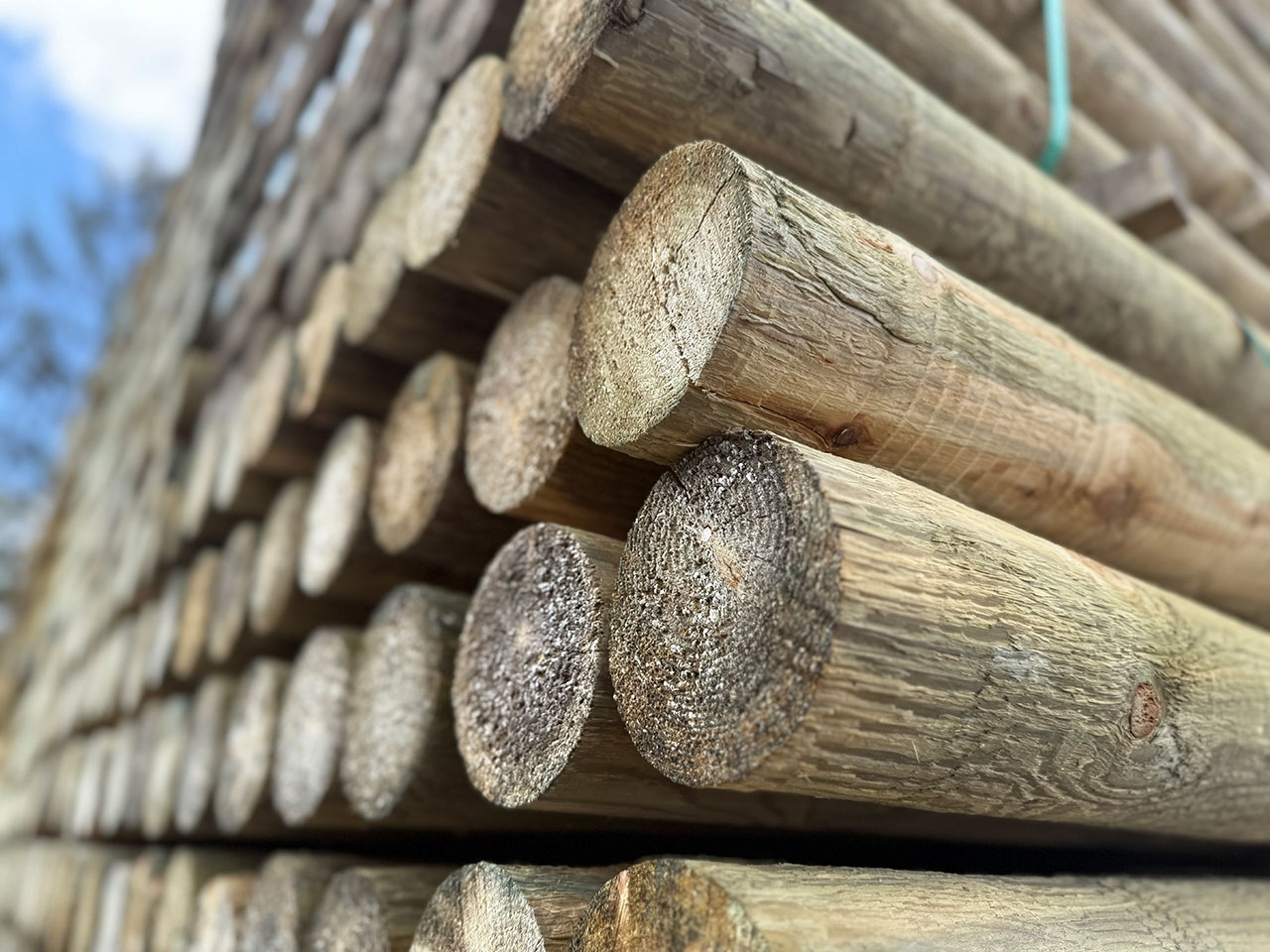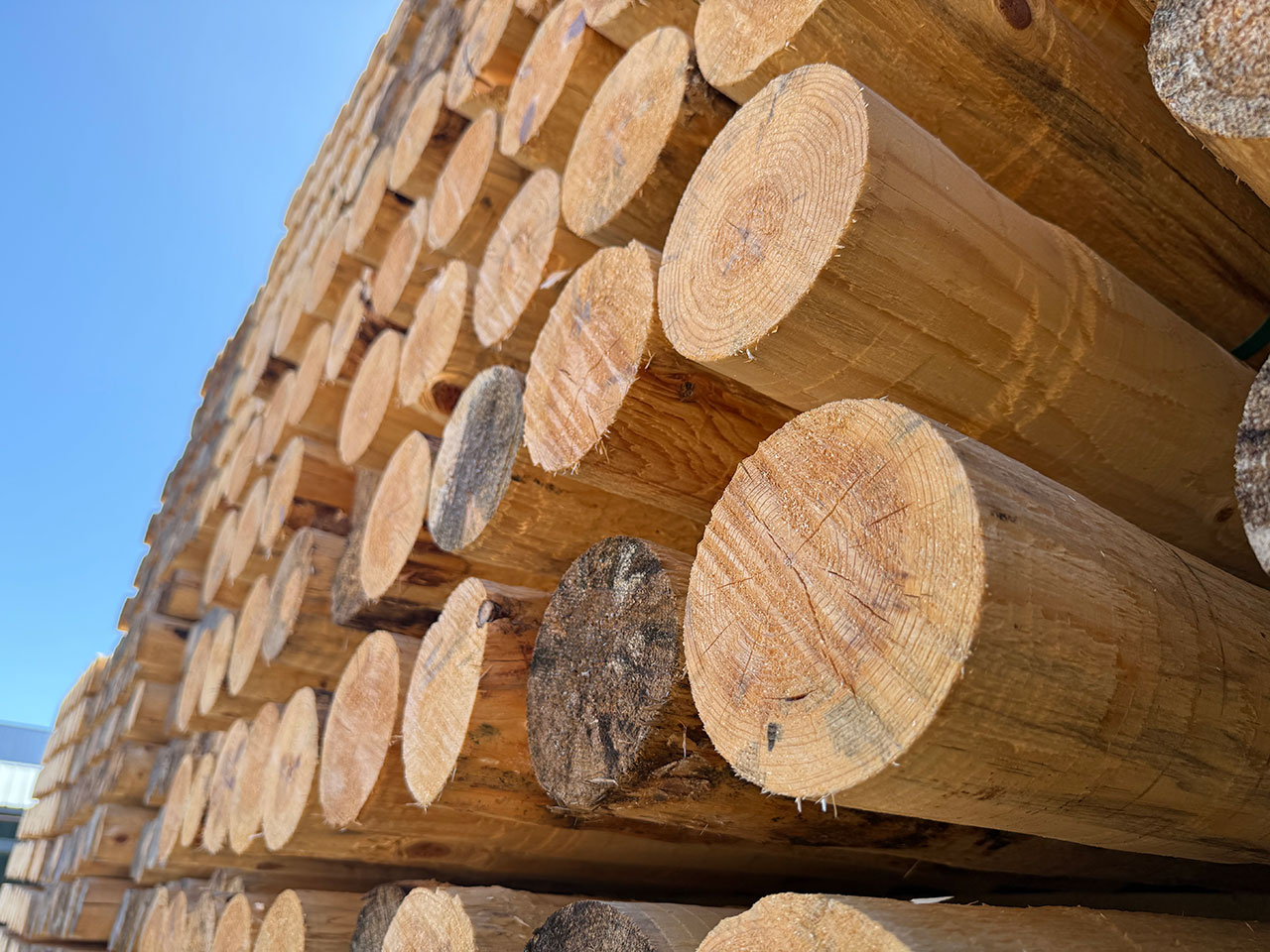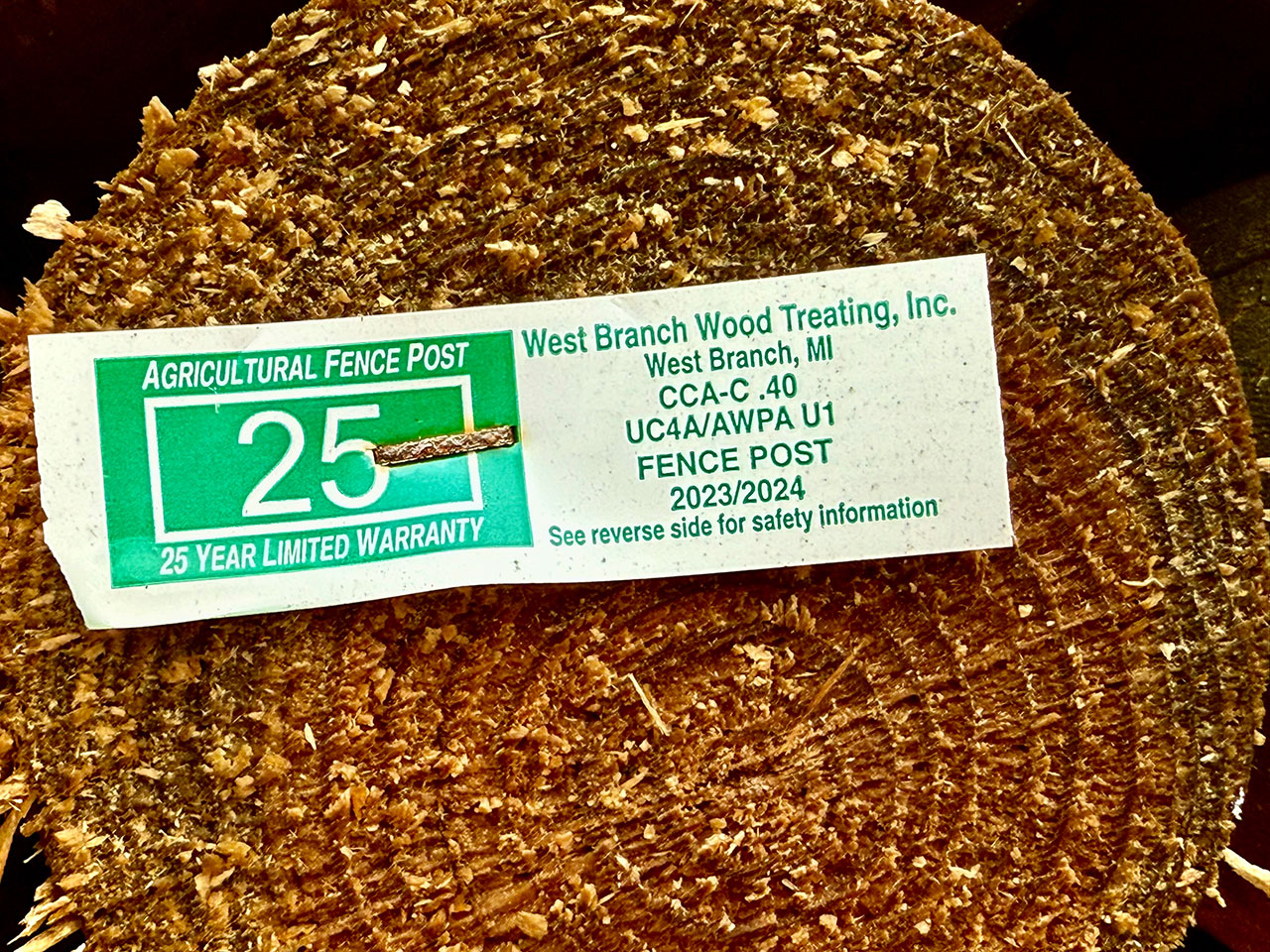When you’re building a fence, trellis system, or any outdoor structure, one of the first choices you’ll face is whether to use a treated post or untreated one. While they might look similar at first glance, the differences between the two are huge when it comes to longevity, performance, and cost-effectiveness. Let’s talk about it.
What is a Treated Wood Post?
A treated wood post is infused with a chemical preservative that helps protect the wood from rot, termites, and decay. Common treatments include ACQ (Alkaline Copper Quaternary), MCA (Micronized Copper Azole), and CCA (Chromated Copper Arsenate). CCA treatment is restricted to in-ground contact use only. All of these preservatives penetrate deep into the wood fibers, offering long-term defense and acts as a repellant against termites. Pressure treatment will extend the lifespan of the post, if the post is properly treated.
Pressure-treated wood is more expensive due to the cost of the treatment process; however, it will last significantly longer than raw wood. Treated posts also typically have a darker color compared to untreated posts due to the chemical preservative.
Key Benefits of Pressure Treated Wood Posts:
- Extended Lifespan: A treated post can last 20 to 30 years or more, if the post is properly pressure-treated up until it reaches the heartwood.
- Resistance to Rot, Decay, and Insects: Especially important for posts set directly into soil or exposed to moisture.
- Durability and Stability: Maintains structural integrity over time.
- Cost-Effective: Lower long-term maintenance and less replacement costs as the posts will last longer, requiring minimal upkeep and repairs for years to come.

What About Untreated Wood Posts?
Untreated posts are natural wood that have not been chemically protected. While they might be less expensive upfront, they are highly vulnerable to rot, decay, pests, and environmental damage, especially when used outdoors. These posts will require replacement within just a few years, resulting in increased long-term maintenance and significantly higher replacement costs, as most of the posts will likely fail around the same time.
Key Drawbacks of an Untreated Wood Post:
- Shorter Lifespan: Often lasts only 2 to 6 years when exposed to the elements, until the post will rot and decay. Posts with a smaller diameter tend to decay more rapidly than those with a larger diameter, due to less wood mass protecting the core.
- Susceptible to Decay: Without protection, moisture, pests, or fungal growth can quickly cause serious damage. Natural wood posts will need to be repaired or replaced in just a few short years.
- Higher Maintenance: Requires regular inspections and treatment, sealing, or painting to prolong its life. Even with upkeep, they won’t last as long as treated posts.
How To Know if My Round Wood Posts are Treated?
Greenish or Brown Tint Color: Most pressure treated wood has a slight brown or green colored tint to them, which is from the chemical preservative, especially the copper based ones. Over time, these colors will fade away and the wood will turn more gray in color. Untreated posts will have a more natural wood look to them and appear lighter in color.
Weight and Texture: Treated wood posts in bulk will significantly weigh more compared to non-treated posts of the same size because of the chemical weight that is infused into the wood. It may also feel damp or oily if it has been newly treated.
Tags or Stamps: The treated post will come with a tag or ink stamp on them, indicating what type of treatment they have received. Some of these tags will say “pressure treated”, “PT”, “ground contact”, “.40 CCA”, “ .60 CCA” or other chemical abbreviations. Untreated ones should not have these tags on the products.
Smell: Newly treated wood may have an oily or chemical smell. If it smells strongly like a chemical and not just plain wood, it is most likely treated.
Warranty: A post that comes with a strong warranty, for example 20+ years, indicates that it has most likely been properly pressure treated with CCA.
Test Kits: Although not commonly practiced and should be used as a last resort, there are wood preservative test kits available to sample your wood and see if it has been chemically treated.
Where Each Option Makes Sense
Treated Post: Best for any project where the post will be in contact with soil or exposed to moisture — like fences, trellis systems, and agricultural applications. Choose pressure-treated when you want your project to last long-term.
Untreated Post: May work for indoor projects, decorative applications, or temporary structures where exposure to moisture is minimal or when longevity is not a concern.
When it comes to round wood posts, resistance to these issues are absolutely essential — especially for posts that are set directly into soil or exposed to moisture. Ground contact creates the perfect conditions for decay and pest infestations, which can rapidly break down non-treated or poorly treated wood. Choosing posts that are properly treated to withstand these threats not only extends the life of your fence or structure but also saves you time, effort, and money on repairs and replacements down the road.
Invest Now, Save Later
If you’re building anything meant to last outside and want your project to last long-term, treated wood posts are the way to go. While the initial cost may be higher, you’ll save money in the long run, as these posts are built to last for decades. They offer superior protection, longer life, and better value over time. Non-treated posts might save you a few bucks at the start, but they’ll likely cost you more in repairs and replacements down the line as they will rot in just a few short years. Investing in high-quality, ground-contact-rated posts is a simple step that makes a huge difference in the durability and reliability of your project.
At West Branch Wood Treating Sales, we believe in building strong from the ground up. That’s why we offer high-quality pressure treated wood posts you can count on for decades. Set your posts once and forget about them for years to come!
Looking for More Information on Our Products?
Reach Out and Experience the Difference
with West Branch Wood Treating Sales.
Contact us today for a free estimate or any additional inquiries.


